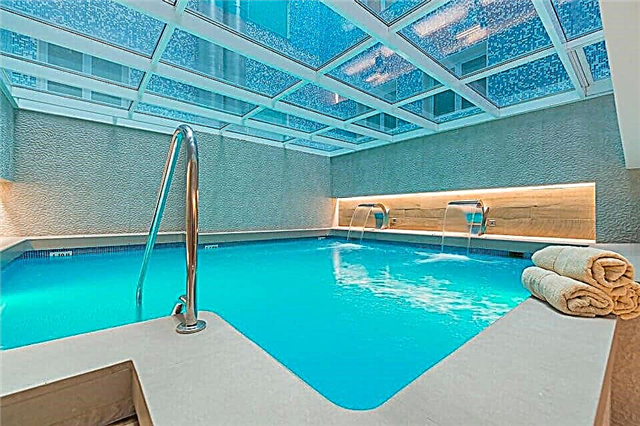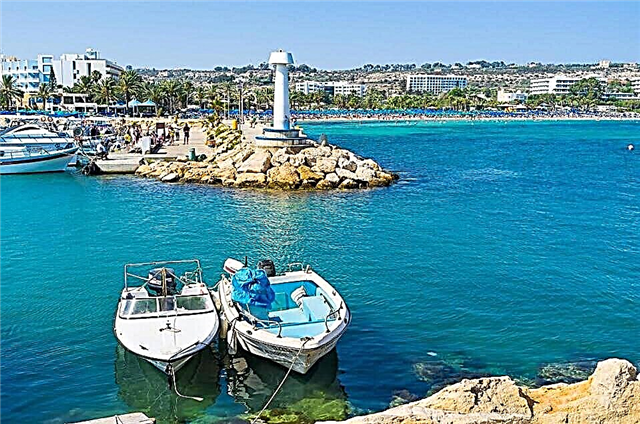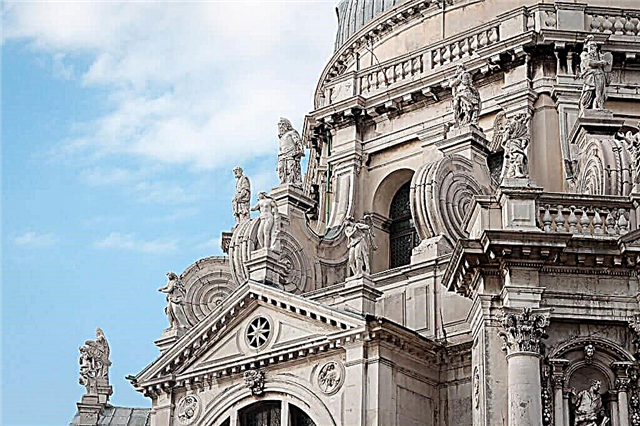The only city in the world that stands on the water, Venice enchants its guests with colorful architectural masterpieces. Every building and structure here is a living history. According to statistics, in terms of the number of inhabitants, more temples have been built in the city than in any other European corner. This is not surprising, since the Venetians are a very devout people. From time immemorial, the erected basilicas have been the quintessence of the wealth and power of the Venetian Republic. In the Dorsoduro area, where the waters of the San Marco Basin flow into the mouth of the Grand Canal, rises a magnificent domed shrine - the Cathedral of Santa Maria della Salute. The Basilica is considered one of the main religious symbols of Venice. The temple was built in the best traditions of the Venetian-Baroque style and is dedicated to the Blessed Virgin Mary.
History of the construction of the cathedral

In the 17th century, the population of Venice was plagued by plague. The medicine of medieval Europe did not yet know the nature of the microbial bacillus that causes this disease, so the Venetians assumed that the poisoned air was to blame. The main measures of protection against the plague were quarantine camps for ships in the roadstead in the lagoon, as well as masks with long noses. Such methods of protection against infection were of a purely psychological nature and did not bring any effect. The terrible pandemic has claimed more than 100,000 lives.
Many believed that the nightmarish infection was a heavenly punishment sent to punish the Venetians for human sins. According to legend, the government of the Venetian Republic, out of hopelessness and despair, made a vow to the Blessed Virgin Mary. It was promised that if she would help rid Venice of a terrible disease, then a magnificent cathedral would be erected in her honor. As a result, a miracle happened - the plague receded. The time has come for the highest nobility to fulfill their obligations to the heavenly powers.
The Grand Council, headed by Doge Nicolo Contarini, held a competition for the best design of the future church. The author of the masterpiece was chosen an outstanding architect of that time - Baldassare Longen. The young architect enthusiastically set about building the extraordinary church. He was tasked with building a shrine large enough for members of privileged communities, wealthy merchants, and ordinary Venetians to bow and pray. The main idea of the architect was to have the temple topped with a huge dome. Thus, it was supposed to show how the Virgin Mary protects Venice with this hemisphere from the plague.
The main problem for the builders was the limited area where the church was planned to be erected. As conceived by the architect, the base of the shrine should be in the shape of an octagon to accommodate the largest number of parishioners. Weak ground required additional strengthening. More than a million wooden piles were installed to solidify the settling soil. Limestone and bricks covered with marble shavings were the main masonry materials for the construction of the temple. The construction of the church lasted for half a century. The architect Longen did not live to see the official consecration of the basilica. The construction was finally completed at the end of 1681.
Architecture and interior decoration of the cathedral

Santa Maria della Salute impresses with its impressive size and exquisite Baroque architecture. The basilica is separated from the water of the Grand Canal by marble steps of a low staircase. The construction of the temple is rather unusual for the traditional architecture of religious Venice. The octagonal building is crowned with a huge copper dome 60 meters high, which rests on large pillars surrounded by six chapels. From a distance, the structure looks very grandiose. During the day, under the rays of the sun, the marble shines, and at night the walls reflect the waters of the canal. On the south side of the church, an extension was made, forming an apse, in which the main altar is located. It is crowned with a dome of only a smaller size. Two bell towers rise behind the structure.
Between the ribs of the multifaceted roof there are 15 arched windows, thanks to which the inner volume of the temple is filled with light during the day. The facade of the cathedral is decorated with cornice, buttresses, columns, bas-reliefs and white marble statues. The main entrance to the temple is built in the form of a triumphal arch, bordered by sculptures of the Mother of God, the Archangel Michael, John the Baptist, Old Testament kings and prophets.

The spacious and bright inner hall is decorated with arched ceilings supported by pilasters. The luxurious interior decoration amazes with its grandeur and beauty. The floor is covered with marble tiles in intricate concentric circles. The main concept of the sanctuary is the rich decoration of the chapels with artistic panels depicting religious subjects, sculptures and columns with bas-reliefs on the platform.
The main religious composition of the cathedral is in the main altar. The icon "Madonna of the Salute deed" is installed here, taken from the island of Crete in 1670 during the war of the Venetian Republic with Turkey. The image is enclosed in a marble frame. Above the icon are small statues that create an allegorical storyline. Venice is symbolized by a young girl who cries out for help from the Madonna with a child in her arms. To the right of them you can see an elderly woman in rags, personifying the plague, who runs headlong from the little angel. This sculptural composition was created by the famous master Giusto Lecourt in 1674.

The basilica delights with an abundance of works by the great Venetian painter Vecellio Titian. His amazing canvases on biblical themes adorn the vault of the huge sacristy. These are such paintings as: "Cain and Abel", "David and Goliath", "The Sacrifice of Abraham." One of his earliest masterpieces, painted in 1510, "Saint Mark on the Throne", deserves special attention. The artist talentedly portrayed the scene of the doctors' prayer addressed to the Apostle Mark for salvation from the plague of Saints Roch and Sebastian, who are the patrons of seriously ill people. The main panel of Titian that adorns the shrine is "The Descent of the Holy Spirit on the Apostles." The painting is located in the main altar.
The basilica contains three unique altarpieces by the Neapolitan Luca Giordano: The Assumption of the Virgin Mary, The Nativity of the Most Holy Theotokos, The Entry of the Virgin Mary into the Temple. He created these paintings according to his own fantasies in a fairly short time, for which he received the nickname "Luka, working quickly." The skillful work of Jacop Tintoretto "The Marriage at Cana of Galilee" will certainly attract the attention of visitors to the temple. The canvas describes a wedding feast based on the gospel story. In the background of the picture, Christ sits at the head of the table, turning water into wine. The artist pushes forward the images of the waterpots that serve the guests.
Interesting facts about Santa Maria della Salute in Venice
For more than three centuries, significant events have taken place in Venice on November 21 every year. On this day, in the Basilica of Santa Maria della Salute, a solemn service is held in honor of the miraculous deliverance from the plague epidemic and a mass of thanks to the Virgin Mary for saving from a deadly pandemic. An amazing sight can be seen near the temple. In front of the shrine, gondolas and boats are assembled, which should form a passage through the Grand Canal to St. Mark's Square for the procession of pilgrims.
In 2010, a fire broke out in one of the premises of the cathedral. The fire spread to the main hall. During the rescue operations of the firemen, only one painting was damaged by water - "David and Goliath".In a short time, Titian's panel was restored.
Where is and how to get to Santa Maria della Salute
The Cathedral of Santa Maria della Salute dominates the Dorsoduro area. This island of Venice is washed by the waters of the Grand Canal and the pool of the lagoon. The temple is located opposite the San Marco area. You can get to the cathedral by vaporetto (route number 1). The water bus will take tourists directly to the pier at the foot of the marble staircase leading to the cathedral. It is also possible to walk to the basilica. To do this, you need to cross the Grand Canal over the Akademica Bridge, which connects the islands of San Marco and Dorsoduro. The dome of the Cathedral of Santa Maria della Salute is visible from afar from all over the city.











